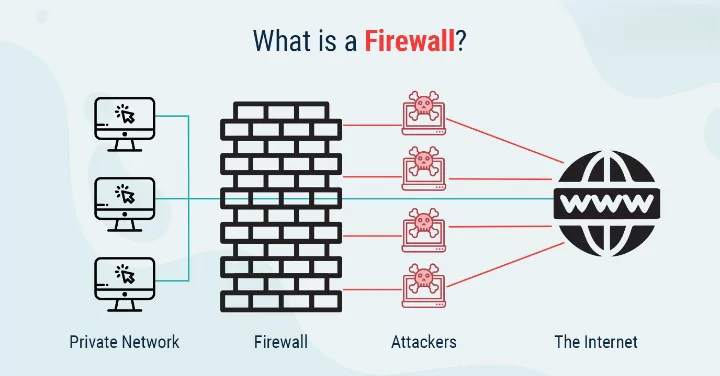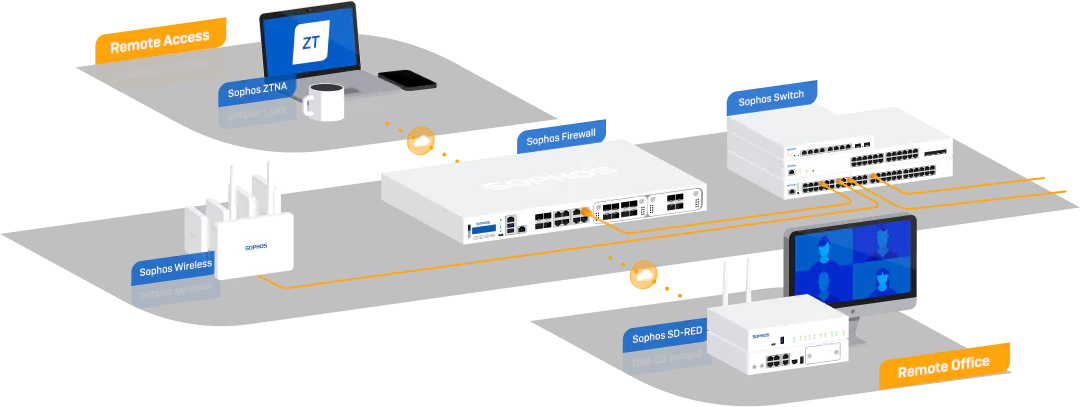Firewall & Network Architecture Review Services
Firewall & Network Architecture Review Services
In an era where cyber threats are increasingly sophisticated, ensuring the security and resilience of your network infrastructure is paramount. Our Firewall & Network Architecture Review Services provide a comprehensive evaluation of your firewall configurations and overall network architecture to ensure robust protection against potential threats. By leveraging our expertise, you can fortify your network defenses, optimize performance, and maintain compliance with industry standards, safeguarding your organization’s critical assets and data.

Our Firewall & Network Architecture Review Services involve a detailed examination of your organization’s firewall configurations and network infrastructure to identify vulnerabilities, enhance security measures, and ensure optimal performance. We assess the effectiveness of your current security controls, recommend improvements, and implement best practices tailored to your specific business needs. Whether you are establishing a new network or seeking to enhance an existing one, our services ensure that your network architecture provides comprehensive protection against evolving cyber threats.

Firewall Configuration Review:
- Policy Assessment: Analyze existing firewall rules and policies to ensure they are aligned with your security objectives and best practices.
- Rule Optimization: Identify and eliminate redundant or conflicting rules to enhance firewall efficiency and reduce the attack surface.
- Access Control Verification: Ensure that access controls are appropriately configured to restrict unauthorized access and protect sensitive data.
Network Architecture Assessment:
- Topology Analysis: Evaluate your network topology to identify potential weaknesses and areas for improvement in design and segmentation.
- Infrastructure Evaluation: Assess the hardware and software components of your network infrastructure for security and performance optimization.
- Scalability Review: Ensure that your network architecture can scale effectively to accommodate future growth and increased demand.
Vulnerability Identification:
- Penetration Testing: Conduct simulated cyber-attacks to identify and exploit vulnerabilities within your network, providing insights into potential security gaps.
- Security Audits: Perform comprehensive security audits to uncover weaknesses and recommend actionable remediation steps.
Compliance Verification:
- Regulatory Alignment: Ensure that your firewall and network configurations comply with relevant industry regulations and standards such as GDPR, HIPAA, PCI DSS, and ISO/IEC 27001.
- Documentation Review: Verify that all necessary documentation is in place and up-to-date to support compliance audits and regulatory requirements.
Performance Optimization:
- Traffic Analysis: Monitor and analyze network traffic patterns to identify bottlenecks and optimize performance.
- Resource Allocation: Recommend optimal resource allocation strategies to ensure efficient network operations and minimize latency.
Threat Modeling:
- Risk Assessment: Identify and assess potential threats and attack vectors specific to your network environment.
- Mitigation Strategies: Develop and implement strategies to mitigate identified risks and enhance overall network security.
Incident Response Integration:
- Response Planning: Integrate firewall and network architecture insights into your incident response plans to ensure swift and effective threat mitigation.
- Forensic Capabilities: Enhance your ability to conduct forensic investigations by ensuring that network logs and data are properly configured and maintained.
Documentation and Reporting:
- Comprehensive Reports: Provide detailed reports outlining findings, vulnerabilities, and recommended actions to enhance your firewall and network security.
- Actionable Insights: Offer clear and actionable insights to guide your IT team in implementing necessary security improvements.

Enhanced Security Posture:
- Proactive Threat Mitigation: Identify and address potential security threats before they can exploit vulnerabilities within your network.
- Comprehensive Protection: Implement layered security measures to protect your IT systems and data from diverse cyber threats.
Regulatory Compliance:
- Meet Legal Requirements: Ensure compliance with relevant data protection and cybersecurity regulations, reducing the risk of legal penalties and fines.
- Industry Standards Alignment: Align your network security practices with internationally recognized standards, enhancing your organization’s credibility and trust.
Operational Efficiency:
- Streamlined Processes: Optimize firewall and network configurations to enhance operational efficiency and reduce complexity.
- Resource Optimization: Allocate IT resources effectively by focusing on critical security areas aligned with your business priorities.
Risk Mitigation:
- Reduced Risk Exposure: Minimize the risk of data breaches and cyber incidents through comprehensive security assessments and proactive measures.
- Business Continuity: Ensure uninterrupted operations with robust incident response and disaster recovery plans integrated into your network architecture.
Customer Trust and Confidence:
- Build Credibility: Demonstrate your commitment to network security, fostering trust and confidence among customers, partners, and stakeholders.
- Competitive Advantage: Differentiate your organization from competitors by showcasing superior network security and compliance measures.
Continuous Improvement:
- Adaptability: Establish a framework for continuous improvement, enabling your organization to adapt to evolving security threats and business needs.
- Sustainable Security Practices: Maintain a resilient and robust network security posture through ongoing monitoring and enhancement of your security controls.
Cost Savings:
- Reduced Remediation Costs: Addressing vulnerabilities early in the network lifecycle is more cost-effective than fixing issues post-incident.
- Efficiency Gains: Achieve cost savings by optimizing security processes and reducing redundancies.
Use Cases:
Financial Services:
- Protect sensitive financial data and transactions, ensuring compliance with industry-specific cybersecurity requirements.
Healthcare Organizations:
- Safeguard patient information and medical records, complying with healthcare data protection regulations and standards.
Government Agencies:
- Secure classified and sensitive government data, maintaining national security and public trust.
E-Commerce Platforms:
- Ensure the security of customer data and transaction information, enhancing trust and reducing the risk of data breaches.
Telecommunications Companies:
- Secure communication networks and customer data, maintaining reliable and trusted service delivery.
Educational Institutions:
- Protect academic records and personal information of students and staff, ensuring compliance with data protection standards.
